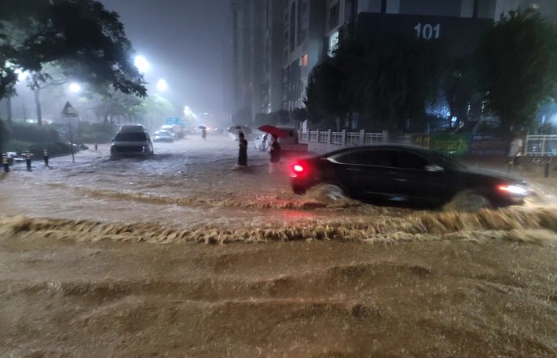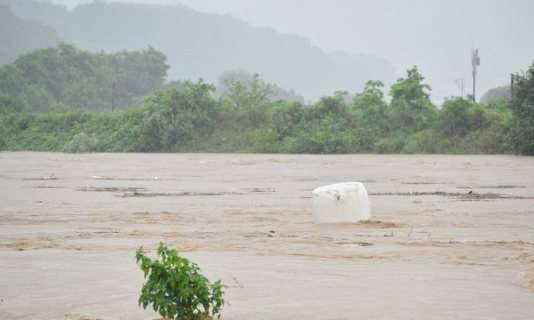
This report highlights the human and environmental toll of South Korea’s mid-July floods, examining the interplay between climate change, urban overdevelopment, and disaster preparedness. It underscores expert warnings that without decisive action, such tragedies may become increasingly common.- Editor’s Note

Torrential rains and flash floods devastated South Korea, killing at least 22 people and displacing thousands. As the nation scrambles to recover, officials and experts warn that climate-driven disasters may become more frequent unless stronger protections are put in place.
From July 15 to 17, relentless downpours struck central and southern regions, including North Gyeongsang Province and the city of Cheongju. According to The Korea Herald, the storm flooded roads, collapsed hillsides, and submerged buildings. One of the deadliest incidents occurred when a road tunnel in Cheongju flooded in just minutes, trapping about 15 vehicles inside. Fourteen bodies were later recovered, and several others remain missing.
A survivor of the tunnel flooding told Yonhap News Agency, “We thought we had time. But the water came from both directions so quickly—it felt like the tunnel turned into a river in seconds.”
The Ministry of the Interior and Safety reported over 3,500 residents had to evacuate. Emergency alerts were issued nationwide, and parts of the country’s high-speed rail system, including KTX trains, were temporarily suspended for safety reasons.
Meteorologists from the Korea Meteorological Administration confirmed that some areas received about 12 inches) of rain in a single day. That’s nearly the average rainfall for an entire July. The agency warned that warming ocean temperatures in the Pacific and surrounding seas are strengthening the East Asian monsoon, making South Korea more vulnerable to heavy downpours.
Dr. Lee Ji-hyun, a climate scientist from Seoul National University, explained in an interview with Arirang News, “What we’re seeing is consistent with climate change predictions—longer monsoon seasons, more extreme rainfall events, and higher risk of flash floods, especially in urban and mountainous regions.”
Experts also say land development is worsening the situation. “We’ve built over too many wetlands and green spaces that would normally absorb water,” said Kang Mi-rae, an environmental advocate from Green Korea United. “Instead, we have paved cities that act like bowls, collecting water instead of draining it.”
In response to the disaster, President Lee Jae Myung held an emergency cabinet meeting on July 18 and declared that “protecting lives is the top priority.” According to The Korea Times, the government promised 100 billion won (about $76 million USD) in relief funds to support recovery, rebuild damaged infrastructure, and improve future flood preparedness.
But for many residents, that’s not enough. “My home is gone. My rice fields are gone. My son’s school is flooded,” said Han Dae-seok, a farmer from North Chungcheong Province, during an interview with KBS News. “They give us emergency food and water, but what about next time?”
Volunteer groups like the Korean Red Cross, Hope Bridge, and local churches have stepped in to provide supplies, shelter, and emotional support for survivors. Military and firefighter rescue teams continue to search rural areas where communication lines are still down.
This flood is not an isolated event. South Korea has faced deadly floods in 2020, 2022, and 2023, each time with mounting death tolls and costly damages. Many experts say the pattern is no longer “unusual weather”—it’s a warning sign.

According to the International Panel on Climate Change (IPCC), East Asia is one of the regions most vulnerable to climate change-related flooding. Urban centers, in particular, are at high risk due to dense populations, aging infrastructure, and poor drainage systems.
In Cheongju, where the tunnel tragedy happened, some officials admitted that the warning system was delayed. “We need smarter and faster flood alert systems,” said Kim Seung-hwan, a city disaster response coordinator. He also called for underground tunnel barriers and better emergency training for police and drivers.
President Myung said his administration will accelerate efforts to install AI-powered flood sensors, improve drainage systems, and revise building codes in flood-prone areas. But environmental groups say tech solutions must be matched by strong climate policies.
“We can’t just rely on gadgets to save us,” said Kang Mi-rae. “We need laws that limit overdevelopment, protect forests and wetlands, and seriously reduce emissions. The climate crisis is already here.”
The KMA warned that more rain is expected in late July and August, raising fears that the worst may not be over yet. Meanwhile, communities are working together to clean up, rebuild, and mourn those who were lost.
As floodwaters recede across South Korea, the damage left behind serves as another painful reminder of how fast the climate is changing—and how vulnerable even advanced nations are. Without bold steps to adapt and reduce risk, the cycle of flood, rescue, and recovery may become a grim new normal.
<Student Reporter Chloe Im> La Canada High School, cim29@mylcusd.net







